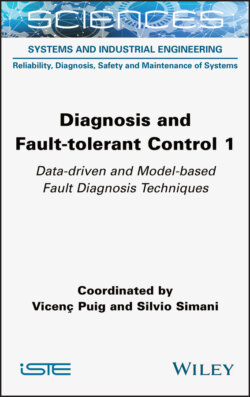Читать книгу Diagnosis and Fault-tolerant Control 1 - Группа авторов - Страница 13
I.3. Fault diagnosis methods based on analytical redundancy
ОглавлениеA traditional approach to fault diagnosis in the wider application context is based on hardware or physical redundancy methods, which use multiple sensors, actuators and components to measure and control a particular variable. Typically, a voting technique is applied to the hardware redundant system to decide if a fault has occurred and its location among all the redundant system components. The major problems encountered with hardware redundancy are the extra equipment and maintenance costs, as well as the additional space required to accommodate the equipment (Isermann 1997; Isermann and Ballé 1997).
In view of the conflict between reliability and the cost of adding more hardware, it is possible to use the dissimilar measured values together to cross-compare with each other rather than replicating each hardware individually. This is the meaning of analytical or functional redundancy. It exploits redundant analytical relationships among various measured variables of the monitored process (Patton et al. 1989; Chen and Patton 1999). Figure I.1 illustrates the concepts of hardware and analytical redundancy.
In the analytical redundancy scheme, the resulting difference generated from the comparison of different variables is called a residual or symptom signal. The residual should be zero when the system is in normal operation and should be different from zero when a fault has occurred. This property of the residual is used to determine whether faults have occurred (Patton et al. 1989; Chen and Patton 1999).
Consistency checking in analytical redundancy is normally achieved through a comparison between a measured signal and estimated values. The estimation is generated by a mathematical model of the plant considered. The comparison is done using the residual quantities that are computed as differences between the measured signals and the corresponding signals generated by the mathematical model (Patton et al. 1989; Chen and Patton 1999).
Figure I.1. Comparison between hardware and analytical redundancy schemes
In practice, the most frequently used diagnosis method is to monitor the level (or trend) of the residual and take action when the signal reaches a given threshold. This method of geometrical analysis, while simple to implement, has a few drawbacks. The most important is that, in the presence of noise, input variations and change of operating point of the monitored process, false alarms are possible.
The major advantage of the model-based approach is that no additional hardware components are required to implement an FDI algorithm as well as FTC. A model-based FDI algorithm can be implemented via software on a process control computer. In many cases, the measurements necessary to control the process are also sufficient for the FDI algorithm, so no additional sensors have to be installed (Patton et al. 1989; Basseville and Nikiforov 1993; Chen and Patton 1999).
Analytical redundancy uses a mathematical model of the system under investigation and therefore it is often referred to as the model-based approach to fault diagnosis.
